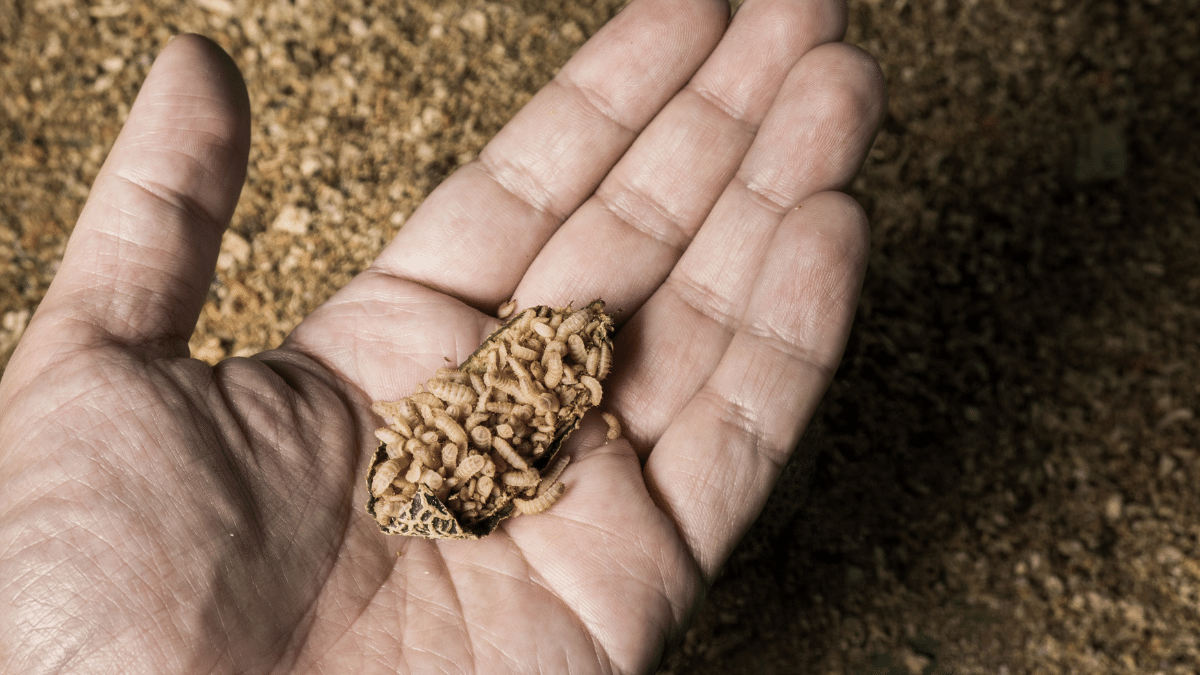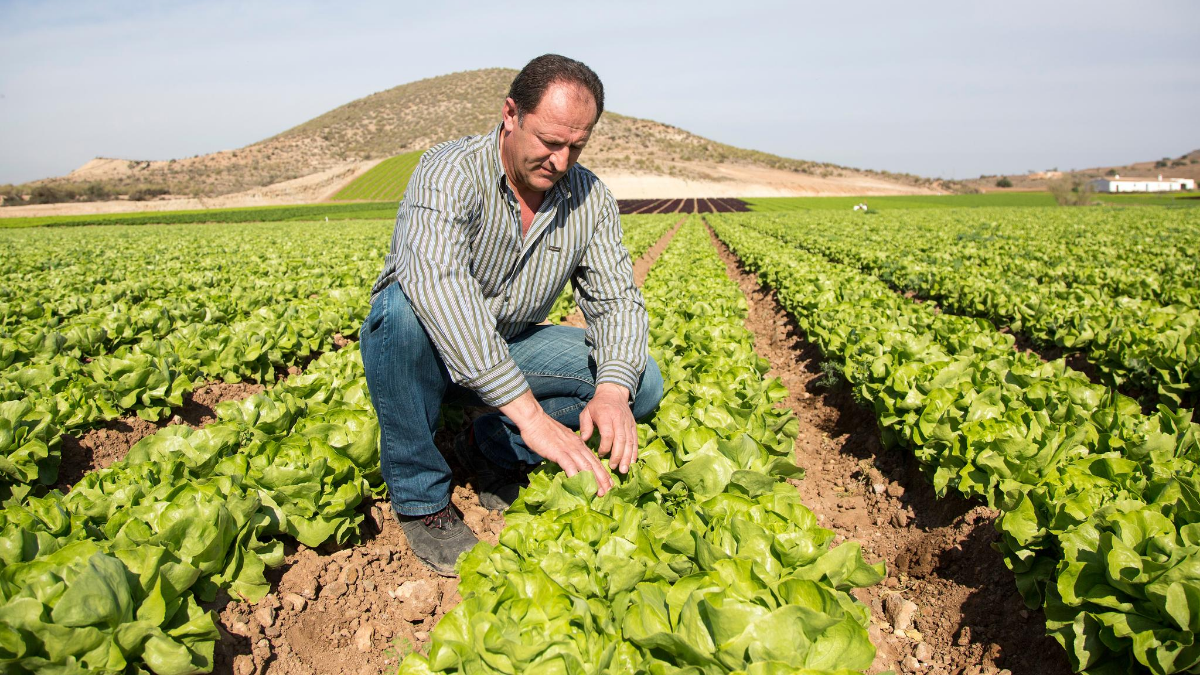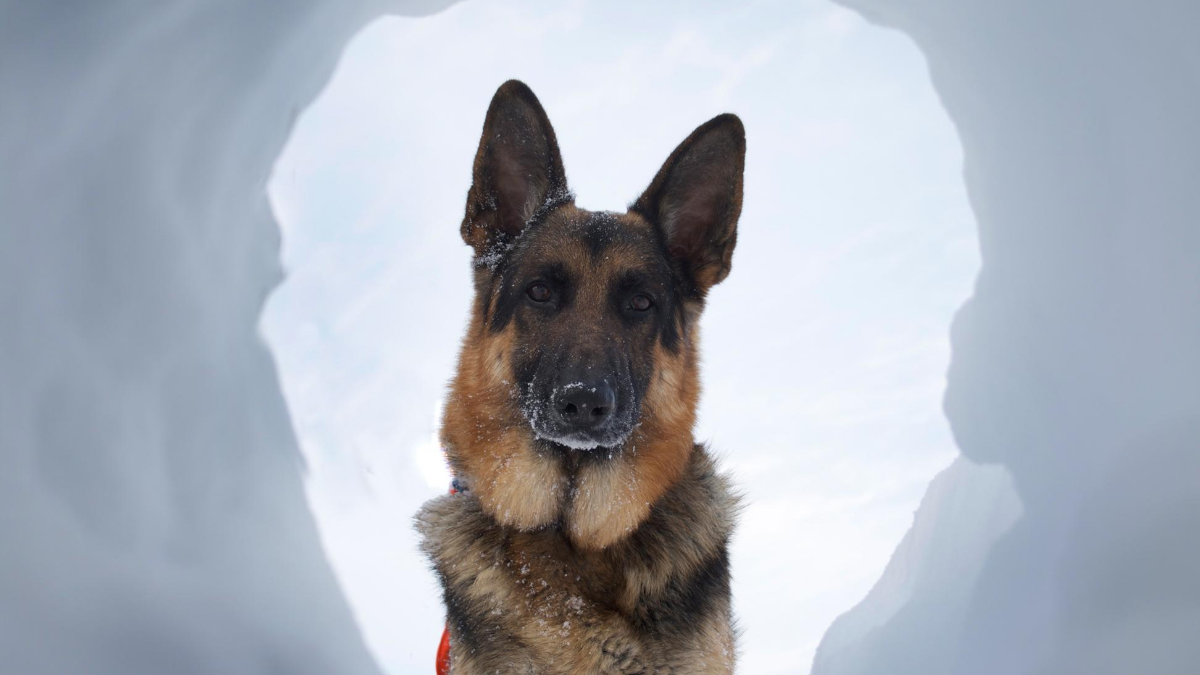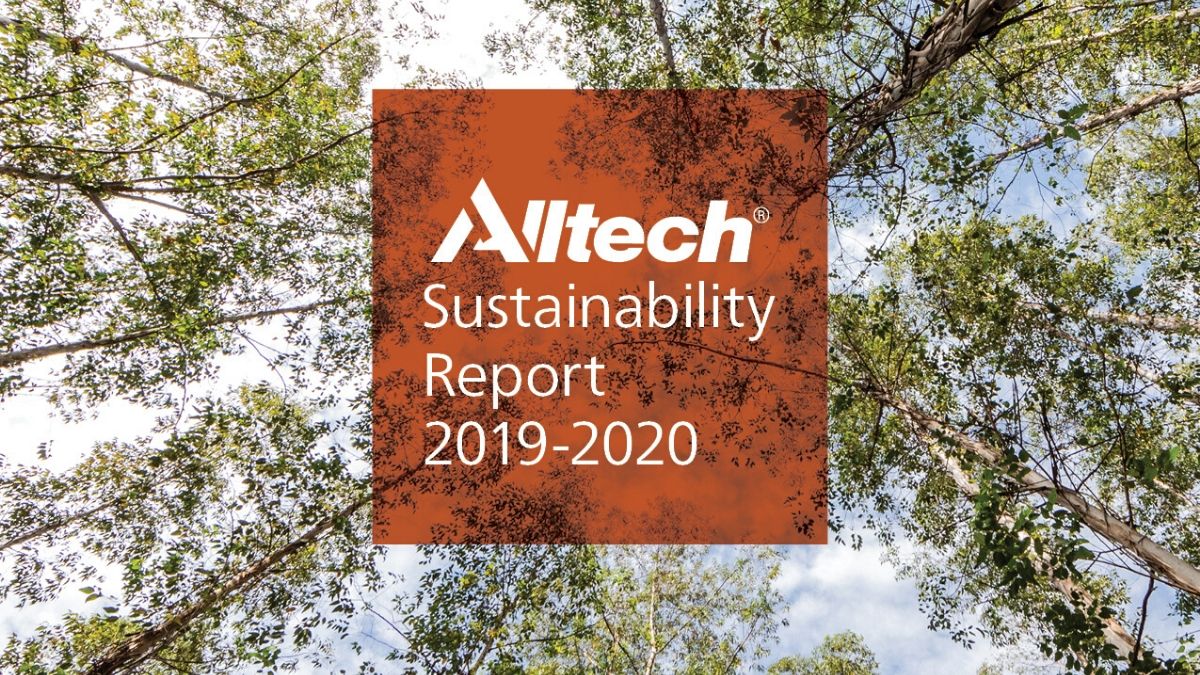Valerie Duttlinger – Empowering Employees for Top Farm Performance
How do the top farms achieve and maintain exceptional performance? Valerie Duttlinger, chief analytics officer at Summit SmartFarms, explains how a positive workplace culture that focuses on the people and processes on the farm can lead to greater agricultural production.
The following is an edited transcript of the Ag Future podcast episode with Valerie Duttlinger hosted by Tom Martin. Click below to hear the full audio.
Tom: I'm Tom Martin with Valerie Duttlinger, chief analytics officer at Summit SmartFarms, and she joins us to talk about her session at (the Alltech ONE Virtual Experience), “Achieving top performance: What does it really take to be the best?” In this session, Valerie covered how top pig farms achieve and maintain elevated performance through focusing on people and processes. Greetings, Valerie.
Valerie: Hi.
Tom: So, first, a bit of background. Tell us about Summit SmartFarms.
Valerie: Well, we’re a startup company based in Remington, Indiana, and we’re focused on equipping people to optimize performance through labor and technology.
Tom: The title of your presentation at this year's virtual ONE (Alltech) Ideas Conference, as I said, was “Achieving top performance: What does it really take to be the best?” And I'm wondering: What criteria have to be met to be considered the best?
Valerie: Well, you know, it's really a combination of a number of things, but it’s ultimately driven by a company's business model. The best for a producer selling weaned pigs is different than what a producer finishing their pigs would be looking for. It's a combination of animal performance, employee engagement and, ultimately, profitability.
Tom: And can you give us some examples of “bests” that everybody would be familiar with?
Valerie: Yeah. So, for a sow farm, you know, 30 pigs weaned per mated female per year is certainly one that is thrown out there a lot. But again, that's not right for everyone. Low mortality is certainly a driver of “best,” both on the sow unit and on the finishing side. But I think having low turnover and highly engaged team members are often not considered in that definition but really should be.
Tom: So, Valerie, if you were called in to diagnose the health of an organization, what would you be looking for?
Valerie: You know, there's really four buckets that I would be looking at. One would be: Do they put people first? And second, are they coaching, or are they just bosses? Third, does the team have the tools they need to win and be successful? And fourth, have they really created an irresistible culture?
Tom: Okay. Let's take those four points one by one. First, people. What needs to be recognized and understood about the people of an organization?
Valerie: You know, everybody is different, but ultimately, people are looking for the same things. And our teams really aren’t any different than those that are working in factories or in offices. They want to be known individually and appreciated for their contributions to the team.
Tom: And “be a coach, not a boss” — what does this mean?
Valerie: You know, for me, great coaches do three things really well: they advocate for their team; they congratulate and celebrate a job well done; and they provide timely guidance when they don't do their jobs correctly.
Tom: “Deploy tools to win” — does this have to do with the quality and the effectiveness of the tools employees are provided to work with?
Valerie: Yeah. It's not just enough to provide tools; they have to have the right tools, like quality and user-friendly SOPs. Other tools could include personality assessments and tools to help team members understand each other in a much better way.
Tom: What are the things that make a workplace culture irresistible?
Valerie: An irresistible culture has a waiting line instead of a revolving door of people, and it's a place where people want to come to work instead of having to come to work. It’s a place where they’re supported and are valued and are known for the difference that they're making in the organization.
Tom: And within that culture, what kinds of generational differences should employees be aware of?
Valerie: Yeah. There are a lot of generational differences, but there certainly has been a big shift in the way that millennials and Generation-Z’s view work. They’re looking for more than just a job that provides a paycheck. They really want their job to provide a purpose that allows them to use their strengths and not focus on weaknesses.
Tom: Do you find that the generations offer different perspectives when they're asked to rate their job satisfaction?
Valerie: Yeah. In 2019, we conducted a labor intelligence study with just over 100 team members in 12 different farms, and the millennials were the least satisfied while making up 50% of the respondents in that study. And that's been a trend that is seen across many different industries, across a number of different surveys and engagement.
Tom: Some of us, we work too hard. We just throw ourselves into our work. And if the job becomes your life, what becomes of your life outside of the work?
Valerie: Well, we do spend more waking hours at work than we do at home. So, a job should really be an extension of your life. It should be working for something that you're passionate about and with people you enjoy being around so that it does add to the value of your life.
Tom: This pandemic that we're in is causing us to kind of step back from overworking. Are you seeing that, and do you think that's going to make a difference going forward?
Valerie: Yeah. It's certainly impacted the way that people are working and living.
You know, in the ag industry, especially in production agriculture, we don't get to just work from home. The animals, they'll have to be cared for and fed. So, it still means going to work, for many of these people. And so, it has certainly been new concerns and new stresses for people as they're trying to educate their children from home while working full-time, having problems with childcare. It's really had a really big impact. But at the same time, in production agriculture, we’re helping to feed the world. And so, we're playing a really important role for frontline workers, and that's important for our team members to remember: the role that they're playing through this pandemic.
Tom: Back to your presentation at the (Alltech) ONE (Virtual Experience). Something I found really interesting (is that) you advocate hiring for fit instead of skills. What is fit, and why is fit more important than skills?
Valerie: You know, fit is about culture. Does this person fit in with the core values and the culture of the company? And we can teach people the skills much easier than we can help them fit into our culture.
Tom: What are the signs of a toxic work culture?
Valerie: Well, I would put at the top of that, gossip, and from — that is generally a result of poor communication. It can be strained interactions, and certainly, high turnover would be a sign of a toxic culture.
Tom: What if, Valerie, right this second, we're talking to somebody who is just absolutely miserable in their job. First, what are some signs of this?
Valerie: You know, I think one of the signs is feeling like you're replaceable, like you're a cog in a wheel and that you're not really known for who you are personally. If you don't feel a connection to the mission of the company and you don't understand if you're winning in your role, it's really hard to be engaged in your job.
Tom: And so, how could this unhappiness be prevented?
Valerie: Well, I think it's partly the responsibility of the leadership team to share the messages that come back at, you know, communicating the history of the company, helping each team member understand how they're impacting the success of the company and the impact that they have on the world by being in agriculture and food production, helping to feed those around us.
Tom: And what could a manager — and I guess a good manager would notice if somebody is going through this. And so, what could that manager do help to a person feel more positive about their job?
Valerie: Well, it may not be just their job that's causing them to be negative. It can be those things that are impacting them outside of (their professional) life. And so, for a manager, to start with having a conversation with them about what really is bothering them is the first place to start. And then, if it dovetails into it being a part of the job and (is) really focused on things that they don't like in the job, it's about how can you adjust the job to allow people to do things that they like. We can't avoid all of the jobs that we like or dislike. But if one person in the farm maybe hates paperwork, and yet they’re responsible for a lot of it, having another person help with that or adjusting those responsibilities can go a long way to helping people be more positive in their outlook on their job.
Tom: And what if you have no way, or at least think you have no way, to actually measure progress or success in these areas?
Valerie: So, I think it's about getting creative. You know, if you have no way to measure progress or success, it’s tough for people to stay engaged. And we really want to know if we're getting better at what we're doing. And so, get creative — even if it's just the scale of 1 to 10, how well do you feel like you did this week, or having your boss rate you (on) how well did you do this week. It doesn't have to be something that is a hard and fast measurement. It can be an objective measurement.
Tom: Okay. And now, this is a “listen up” for management. The question is: What are the key traits of an organization that people want to be a part of?
Valerie: Yeah. They want a place that embraces teamwork. They need to have clear goals and objectives so that they really have a clear path to what they're working towards, and they really want to work in their strength areas. You know, a football player, a quarterback, is not out there practicing kicks, because that's not his strength area. So, putting people in the places where they're working in their strength area is really important today.
Tom: Earlier, we touched on why it's important to be a coach and not a boss. Let's drill down into that just a bit. What distinguishes a coach from a boss?
Valerie: A coach would say things like “we” instead of “I”. They're going to give the credit instead of taking credit, and yet, they're always going to accept the blame instead of placing the blame on others. And I think a really great coach pushes you to do more and be more than you thought you could do or be.
Tom: Sometimes, there has to be a difficult, uncomfortable conversation between employee and manager, and you say that these discussions should happen sooner than later. Why is that?
Valerie: Well, nothing good ever happens by putting it off. And certainly, if the conversation is about somebody doing a task wrong, and they're doing that task over and over again and then you finally address it, it makes them feel foolish. It also hurts their trust in you as a leader, because if you really cared about them and the company, you would have addressed it in a much quicker manner.
Tom: We talked earlier about providing good tools to employees, but what are some important tools that ought to be made available to managers?
Valerie: You know, most managers get promoted before they've actually had any leadership training, and that's not just true in agriculture; it’s true across all industry. And so, providing training is so important to help them develop the skills to lead people, because that role of a leader is so different than being an individual contributor. And there are a lot of different tools out there. You know, one of them that we’re utilizing is a personality platform called Cloverleaf that has nine different personality assessments on it. And you can put your team on it to help you see the differences in people's personalities — how they want to be communicated with, what motivates them — so that you can really tailor your role as a manager to best motivate and influence individual team members.
Tom: So, these are tools that can help managers better understand their people.
Valerie: Yeah. Absolutely. And the Cloverleaf platform has nine different personality assessments — things like DiSC and Myers-Briggs, that are very common for most people. And it puts your team all together so that you can see how individuals fall on those different assessments.
Tom: How about conflict? Are there tools available to help managers deal with conflict?
Valerie: There are. There's more generic tools out there that help people learn how to have productive conflicts. You know, not all conflict is bad. And then there are other tools on the Cloverleaf platform as well. There's a comparison tool where you can look at two different people and identify where conflict is existing between those (people) and helping them understand each other — that it's not an intentional push of a button to get somebody upset, but just the way that people view things differently.
Tom: How can an organization optimize onboarding and training?
Valerie: Well, I think it starts with having the right person do the onboarding and training, and that should not be the last person that was hired, which is often the case. Having a teacher's heart is so important, rather than someone who may be annoyed by the same question over and over. It’s going to be really important to optimize that onboarding and training process.
Tom: And are there some training tools that you can recommend?
Valerie: Yeah. There's a number of production-related training platforms out there today that provide a really good foundation. There are also programs that are done internally within some of these organizations that have been hugely successful, but tools that really focus on improving communication and leadership are important not just for leaders but for everybody in the organization.
Tom: Earlier, we touched on culture. Do a company's core values translate into the nature of its culture?
Valerie: Not always. So, core values are words on the wall, while culture is the behavior and the actions of the people. And so, they don't necessarily equal each other, unfortunately.
Tom: Earlier, we talked about the signs of a toxic workplace culture. How can this be changed?
Valerie: It really starts with rebuilding trust, because to get to a toxic workplace, there has been trust that had been broken. And so, communicating transparently that you're making an effort to change the workplace culture, admitting the mistakes that have been made and acknowledging that you want a different outcome in the future (are important steps). It's important to recognize the changes in behaviors as you go through this transition. And one of the big things that happens in toxic workplaces, often, is treating each person — making sure that everybody follows the same rules and that nobody gets preferential treatment. Changing culture is not a fast process, but it may be the most important key to long-term success for operations.
Tom: So, these are some ways that an organization's leadership can go about fixing these issues that lead to toxicity in the culture.
Valerie: Yeah. I think you've got to start with making a commitment to change and then find somebody to help you through the process who doesn't have other responsibilities pulling them away from the mission. You know, it's great to pick a platform to get to know your people better, and that can be that single assessment, like DiSC or Myers-Briggs, or it could be the Cloverleaf platform that I talked about. And then, finally, it’s integrating those changes and inspecting them regularly to make sure that the changes are taking place and you're seeing the outcome that you desire.
Tom: Valerie Duttlinger, chief analytics officer at Summit Farms. We thank you for joining us, Valerie.
Valerie: Thank you.
Tom: I'm Tom Martin. Thank you for listening.
- Read more about Valerie Duttlinger – Empowering Employees for Top Farm Performance
- Log in to post comments

A workplace where employees are supported, valued and are known for the difference they're making in the organization is what makes up an irresistible workplace culture according to Valerie Duttlinger.





















